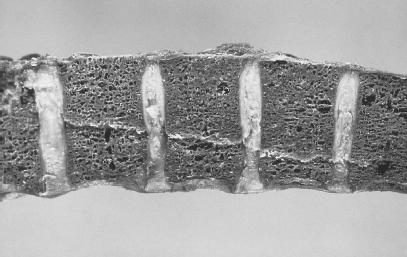The Immune System - How it works
The Immune System in General
The human body is under near constant attack from pathogens, or disease-carrying parasites, of the type discussed in Infection, Infectious Diseases, and Parasites and Parasitology. No human would live very long without the immune system, which includes two levels or layers of protection, the nonspecific and the specific defenses. The nonspecific defenses, including the skin and mucous membranes, serve as a first defensive line for preventing pathogens from entering the body. The specific defenses are activated when these microorganisms get past the nonspecific defenses and invade the body.
For the immune system to work properly, two things must happen: first, the body must recognize that it has been invaded, either by pathogens or toxins or by some other outside threat. Second, the immune response must be activated quickly, before the invaders destroy many body tissue cells. For the immune system to respond effectively, several conditions must be in place, including the proper interaction of non-specific and specific defenses. The nonspecific defenses on the skin do not identify the antigen (a substance capable of stimulating an immune response or reaction) that is attacking or potentially attacking the body; instead, these defenses simply react to the presence of what it identifies as something foreign. Often, the nonspecific defenses effectively destroy microorganisms, but if these defenses prove ineffective and the microorganisms manage to infect tissues, the specific defenses go into action. The specific defenses function by detecting the antigen in question and mounting a response that targets it for destruction.
THE MAJOR HISTOCOMPATIBILITY COMPLEX.
How does the specific system "know" what is foreign and what is part of the body? The cell membrane of every cell is studded with various proteins, which together are known as the major histocompatibility complex, or MHC. The MHC is a kind of pass code, since all cells in the body must possess an identical pattern so that the body will identify those cells as belonging to the "self." An invading microorganism, such as a bacterium, does not have the same MHC, and when the immune system encounters it, it alerts the body that it has been invaded by a foreign cell.
Every person has his or her nearly unique MHC, and the response of the immune system to foreign MHC can pose a problem where organ transplants are concerned. Because the immune

Parts of the Immune System
The organs of the immune system include the lymphatic vessels, lymph nodes, tonsils, thymus, Peyer's patch, and spleen. Each of these organs either produces the cells that participate in the immune response or serves as a site for immune function. Lymphocytes, a type of white blood cell, are concentrated in the lymph nodes, which are masses of tissue that act as filters for blood at various places throughout the body-most notably the neck, under the arms, and in the groin. As the lymph (white blood cells plus plasma) filters through the lymph nodes, foreign cells are detected and overpowered.
The tonsils, located at the back of the throat and under the tongue, contain large numbers of lymphocytes and filter out potentially harmful bacteria that might enter the body via the nose and mouth. Peyer's patches, scattered throughout the small intestine and appendix, are lymphatic tissues that perform this same function in the digestive system. The thymus gland, located within the upper chest region, is another site of lymphocyte production, though it is most active during childhood. The thymus gland continues to grow until puberty, protecting a child through the critical years of early development, but in adulthood it shrinks almost to the point of vanishing.
Marrow, the soft tissue at the core of bones, is a key producer both of lymphocytes and of another component of blood, the hemoglobin-containing red blood cells. Because of its critical role in the immune system, it is a very serious decision to allow marrow to be extracted (itself an extremely serious operation, of course) for use in a cancer treatment, as described in Noninfectious Diseases. The spleen, in addition to containing lymphatic tissue and producing lymphocytes, acts as a reservoir for blood and destroys worn-out red blood cells.
ANTIBODIES, B CELLS, AND T CELLS.
The functioning of the immune system also calls into play a wide array of substances, most notably antibodies and the two significant varieties of lymphocyte: B cells and T cells. Antibodies, the most well known of the three, are proteins in the human immune system that help fight foreign invaders. B cells (B lymphocytes) are a type of white blood cell that gives rise to antibodies, whereas T cells (T lymphocytes), are a type of white blood cell that plays an important role in the immune response. T cells are a key component in the cell-mediated response, the specific immune response that utilizes T cells to neutralize cells that have been infected with viruses and certain bacteria. There are three types of T cells: cytotoxic, helper, and suppressor T cells. Cytotoxic T cells destroy virus-infected cells in the cell-mediated immune response, whereas helper T cells play a part in activating both the antibody and the cell-mediated immune responses. Suppressor T cells deactivate T cells and B cells when needed, and thus prevent the immune response from becoming too intense.
The intricacies of the immune system's functioning are far beyond the scope of this essay. The reader interested in a more in-depth review of the substances, organs, glands, and processes is encouraged to seek clarification from a textbook. On the other hand, a very basic and nontechnical example of how the body resists infection can help clarify, in general terms, how the immune system does its work.
Comment about this article, ask questions, or add new information about this topic: